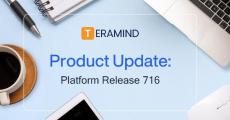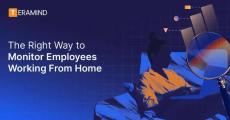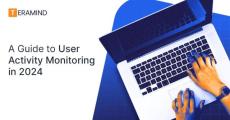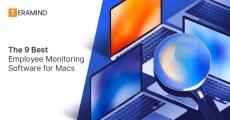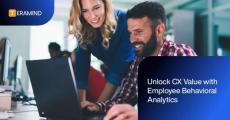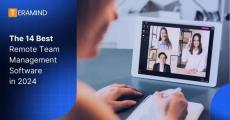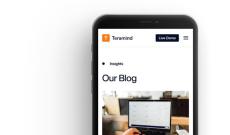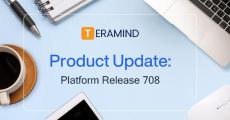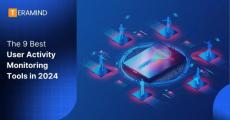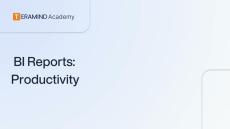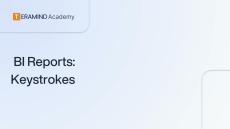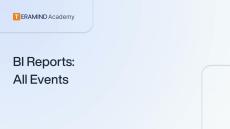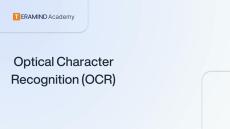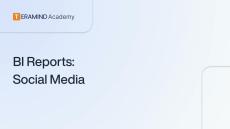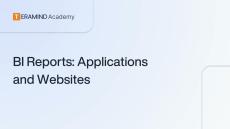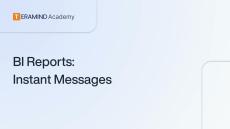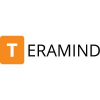|
By Teramind
Platform Release 716 contains 308 new features, improvements, and bug fixes from Windows Agent 24.45, Mac Agent 24.45, Web 24.47.1, Server 24.45, and BI 24.42 as well as other components since the last release. See the highlights below. For a full rundown, check out the complete Release Notes.
|
By Taran Soodan
The unprecedented rise of remote work has triggered the need for businesses to manage employee productivity and mitigate data security risks effectively. Understanding how to monitor your remote workforce while respecting employee privacy and fostering a positive work environment is critical. This guide explores the key considerations for implementing remote employee monitoring, including best practices, top features, and the benefits of monitoring software.
|
By Taran Soodan
Cyber threats are becoming increasingly sophisticated, and data breaches can have catastrophic consequences. User Activity Monitoring (UAM) is the frontline defense for organizations seeking to protect their digital assets and maintain client and stakeholder trust. In the same light, user activity monitoring is critical to a comprehensive cybersecurity strategy as it gives you a clear picture of employee activity on company devices and networks. It answers critical questions like: With UAM, you can.
|
By Taran Soodan
As remote and hybrid workforces become more common, companies have felt a greater need to connect with employees. Employee monitoring software has gained popularity recently to help companies keep in-person and remote workers aligned and working towards common goals. With the popularity of Apple devices like Macs and Macbooks, companies need a way to monitor activity to ensure employees are actually working and productive.
|
By Teramind
Customer experience (CX) has emerged as a crucial influence on market share among banking organizations. Financial institutions that invest strategically in CX achieve 2.5x higher wallet share and 1.9x higher customer satisfaction scores compared to their peers. 93% of banking organizations view CX as their primary competitive differentiator, which highlights the importance of a superior CX. However, there’s a crucial gap in how banks approach CX enhancement.
|
By Teramind
At its most basic, remote team management software facilitates teams working together from different locations. These tools enable teams to coordinate and communicate effectively, regardless of geographical barriers. By providing a centralized platform for collaboration and oversight, remote team management software helps keep objectives aligned across dispersed workforces, bridging physical distance to mimic the efficiency of a traditional office setting.
|
By Teramind
Business process analysis (BPA) is a powerful tool for streamlining operations, reducing costs, and improving efficiency. It offers a systematic approach to examining and optimizing the internal processes that drive your organization’s success. In this guide, we’ll explore the intricacies of business process analysis, providing you with the knowledge and tools you need to implement this practice in your organization.
|
By Teramind
Platform Release 708 contains 221 new features, improvements, and bug fixes from Web 24.38.3, Server 24.37, BI 24.36, Windows Agent 24.31, and Mac Agent 24.35 as well as other components since the last release. See the highlights below.
|
By Taran Soodan
With so many devices and applications used by employees at work, it’s tough for companies to maintain visibility and control over network activities. User activity monitoring (UAM) software has emerged as a critical tool, empowering businesses to safeguard against data breaches, insider threats, and low productivity.
|
By Teramind
Employee burnout has become widespread, impacting employee well-being, job satisfaction, and overall organizational culture. As stress levels rise due to heavy workloads, lack of work-life balance, and unclear role expectations, many employees experience burnout. To maintain a positive work environment, employers need to recognize the warning signs and take proactive measures to support their employees’ mental health and overall physical well-being.
|
By Teramind
Learn how to detect a mouse jiggler and synthetic keyboard input, gaining crucial insights into employee engagement and productivity.
|
By Teramind
Teramind can help revolutionize your approach to employee performance and engagement. Learn to track employee productivity effectively using our comprehensive dashboard.
|
By Teramind
Learn how our advanced user activity monitoring (UAM) tools can help you identify communication patterns and protect sensitive data.
|
By Teramind
Uncover patterns in your organization's printing habits, from peak printing times to potential data leaks.
|
By Teramind
Understand user behavior, optimize workflows, and protect sensitive data by viewing our All Events dashboard.
|
By Teramind
Teramind's Optical Character Recognition (OCR) tool transforms every pixel on every screen into searchable text. Learn to detect sensitive information on user screens and prevent potential data breaches.
|
By Teramind
Gain valuable insights into your workforce's online activities and learn how to leverage our UAM tools for effective employee monitoring and productivity optimization. Dive deeper into social media monitoring and employee productivity.
|
By Teramind
Get crucial insights into your team's application and website usage patterns and learn how our UAM tools can help optimize employee productivity. Dive deeper into employee productivity and user behavior analysis.
|
By Teramind
Discover how Teramind's powerful BI Reports can revolutionize your understanding of instant messaging patterns and productivity in your organization. Dive deeper into business intelligence and productivity analytics.
|
By Teramind
Learn how to deploy Teramind on the Nutanix AHV platform using Prism Central. This tutorial guides you through each step to ensure a smooth and efficient setup.
|
By Teramind
Learn the basics of the insider threats: what are insider threats? Where do they come from? What are progressive mitigation methods for active threat prevention?
|
By Teramind
Data breaches are at an all-time high, with all evidence pointing to increased data exposure. Naturally, organizations are turning to employee monitoring, insider threat detection and data loss prevention technologies to protect themselves. There is, however, some concern that these solutions may create a potential conflict with employee and consumer privacy rights. Especially, with the introduction of GDPR, CCPA and other similar laws at various stages of processing, companies around the world are being forced take a closer look at their data governance and privacy policies.
- December 2024 (2)
- November 2024 (4)
- October 2024 (2)
- September 2024 (3)
- August 2024 (8)
- July 2024 (28)
- June 2024 (10)
- May 2024 (9)
- April 2024 (4)
- March 2024 (8)
- February 2024 (1)
- January 2024 (1)
- November 2023 (1)
- October 2023 (1)
- August 2023 (1)
- July 2023 (5)
- June 2023 (7)
- May 2023 (2)
- April 2023 (4)
- March 2023 (12)
- January 2023 (1)
- May 2022 (1)
- April 2022 (1)
- February 2022 (2)
- November 2021 (1)
- September 2021 (4)
- August 2021 (5)
- July 2021 (4)
- June 2021 (6)
- May 2021 (3)
- April 2021 (5)
- March 2021 (4)
- February 2021 (8)
- January 2021 (6)
- December 2020 (6)
- November 2020 (4)
- October 2020 (4)
- August 2020 (2)
- July 2020 (2)
- June 2020 (2)
- May 2020 (1)
- April 2020 (1)
- March 2020 (1)
- December 2019 (2)
- November 2019 (2)
- October 2019 (1)
- June 2019 (4)
- May 2019 (3)
- April 2019 (1)
- March 2019 (1)
- January 2019 (3)
Founded in 2014, Teramind is a leading, global provider of employee monitoring, user behavior analytics, insider threat detection, forensics and data loss prevention software solutions. Over 2,000 organizations in finance, legal, retail, manufacturing, energy, technology, healthcare and government verticals across the globe trust Teramind’s award-winning platform to detect, record, and prevent malicious user behavior in addition to helping teams drive productivity and efficiency.
- User Activity Monitoring: Monitor and control user activity to ensure compliance with internal security policies and regulatory requirements.
- User Behavior Analytics: Identify behavior anomalies and uncover potential threats in real time. Get fully customizable alerts with full audit trail and video recording of all user actions.
- Data Loss Prevention: Leverage Teramind's industry-defining DLP features such as OCR, fingerprinting, and content discovery to prevent malicious or negligent data exfiltration.
- Employee Monitoring: Monitor employee activity with customizable reports to identify team, department, individual level productivity, social media use, time spent on projects, apps, and more.
- Compliance & Audit: Ensure ongoing compliance for GDPR, HIPAA, PCI and much more by identifying and alerting user to non-compliant actions with real time alerts.
- Insider Threat Prevention: Automate risk detection and block unwanted employee behavior. Teramind uses smart rules & alerts to always keep your organization safe.
The Right Employee Monitoring and DLP Solution for Every Need.


